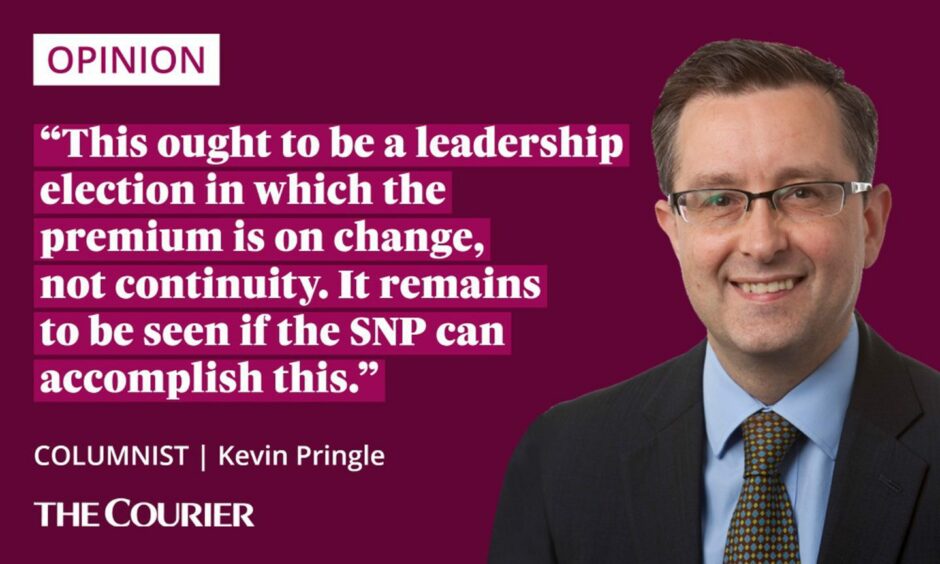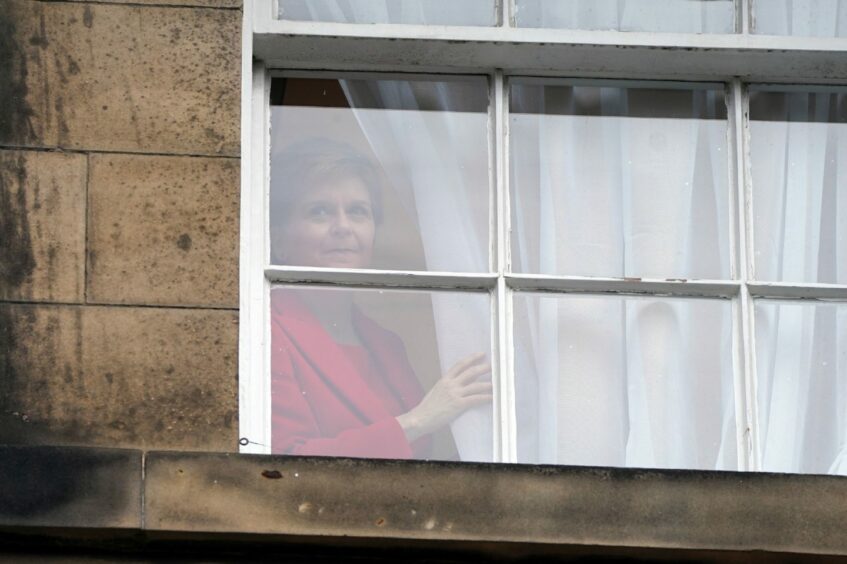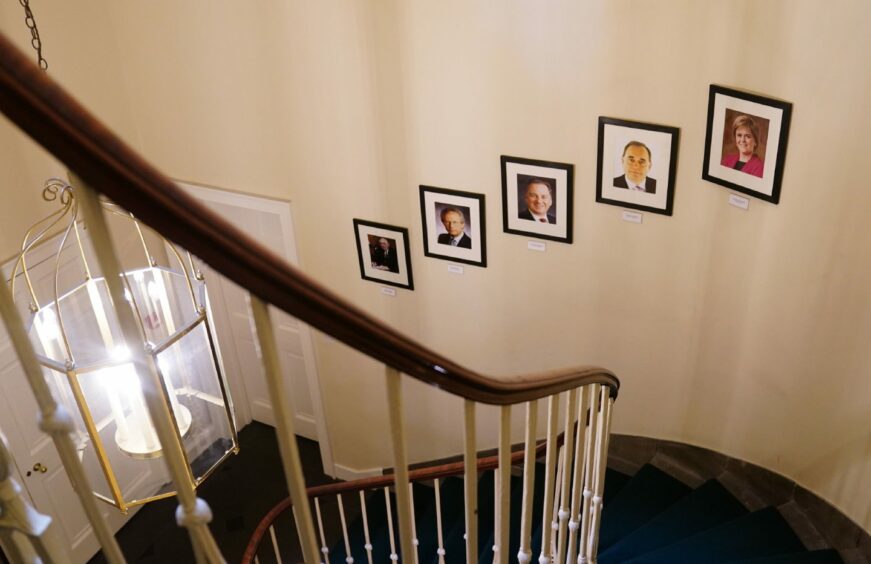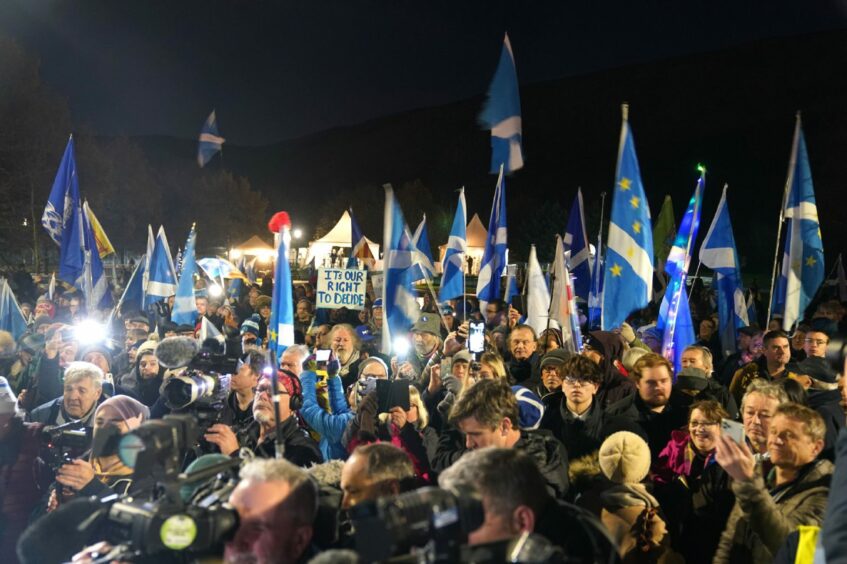The SNP isn’t Scotland. That’s been a regular refrain of pro-Union politicians ever since the SNP established its electoral dominance.
I always found it a strange thing for them to say, given that I don’t think anyone in the party believes it embodies the entirety of the nation.
However, in a sense, for the next few weeks the SNP is Scotland.
What I mean by this is that it has fallen to the perhaps 100,000 members of that party (of which I am one) to make a decision on behalf of the whole of Scotland.
By choosing their next leader, SNP members will also be determining who the next first minister is to be, and thus the future direction of our devolved government.

That puts a heavy burden of responsibility on the candidates and on this narrow pool of voters: about two per cent of the Scottish electorate.
The argument that this internal process should be followed by a swift Scottish Parliament election, so that everyone else gets their say, carries some force.
In most parliamentary democracies nowadays, there is such a strong focus on the leader – rather than the collective cabinet – that it’s not unreasonable for opposition politicians and others to demand an election when the person at the top changes.
Certainly, the members of Nicola Sturgeon’s administrations since 2014, including those vying to replace her, have largely done their jobs in her shadow.
Therefore, I wouldn’t be against an election before the next scheduled Holyrood poll in 2026.
There are strong arguments in favour of democratic renewal happening on as wide a canvass as possible, and for a new first minister to seek their own mandate from the people.
There is, though, a sound case in the other direction. And the political reality is that an early election is unlikely to be pursued by the next incumbent of Bute House.
New SNP leader must act in national interest
Holyrood is structured by statute to have fixed parliamentary terms.
There are ways and means for this to be overridden in special circumstances. But as far as I recall no one argued for this to happen when, for example, Jack McConnell took over as first minster after Henry McLeish resigned in 2001, or when Nicola Sturgeon replaced Alex Salmond.
Ironically, when the House of Commons experimented with having fixed five-year terms in a bill passed in 2011, the UK went on to have two unplanned general elections.
This ineffective law was repealed last year.
Another valid point is that the Holyrood system requires a new first minister (indeed all new ministers) to be voted into office by the parliament, which again is different from Westminster.
In other words, there is a process of democratic approval that will accompany the appointment of the new first minister, to the extent that the MSPs who vote in the next holder of the office are themselves elected.
In any event, given that the SNP is answering the leadership question for all of Scotland, it follows that candidates and members alike should lift their eyes and do so on the basis of the wider Scottish national interest, rather than fixating with the party’s internal concerns.
I’ve been around. I remember SNP leadership campaigns. I always took a position. I have been on the winning side & on the losing side. This I know: Leadership campaigns( whatever the party) are toxic. In my day though there was no twitter. The wise people keep their own counsel.
— Tricia Marwick (@TriciaMarwick) February 21, 2023
That means prioritising specific plans to boost the economy, rebuilding performance and confidence in our public services where that is necessary, and supporting people’s living standards in tough times.
It should also mean getting beyond the problems that ultimately undermined Ms Sturgeon’s position as first minister – not least but not only gender recognition law – by reconsidering existing stances and policy.
SNP leader must make renewed case for independence
In terms of achieving an independent Scotland, the focus should be on putting the horse back in front of the cart.
That means working to build sustained majority support for it, rather than pre-determining the precise mechanism for getting there.
This task could be aided by creating a campaign infrastructure in the country to win hearts and minds – on a constitutional convention model – rather than the drive for independence being viewed as little more than an extension of the Scottish Government.
One way or another, this ought to be a leadership election in which the premium is on change, not continuity. It remains to be seen if the SNP can accomplish this.
Understandably, Scotland’s opposition parties hope that, because of losing a formidable leader, the SNP will emerge from this contest weakened.
That is at least a short-term risk.
On the other hand, ever since the SNP first won office in 2007, an event was predicted to come along that would knock the party off its perch.
All that can be said is it hasn’t happened so far.
The Yes campaign losing the 2014 referendum was supposed to cause an existential crisis for the SNP and boost the pro-Union parties: the opposite happened.
Whether the SNP continues to command the confidence of voters still lies in its own hands.














Conversation